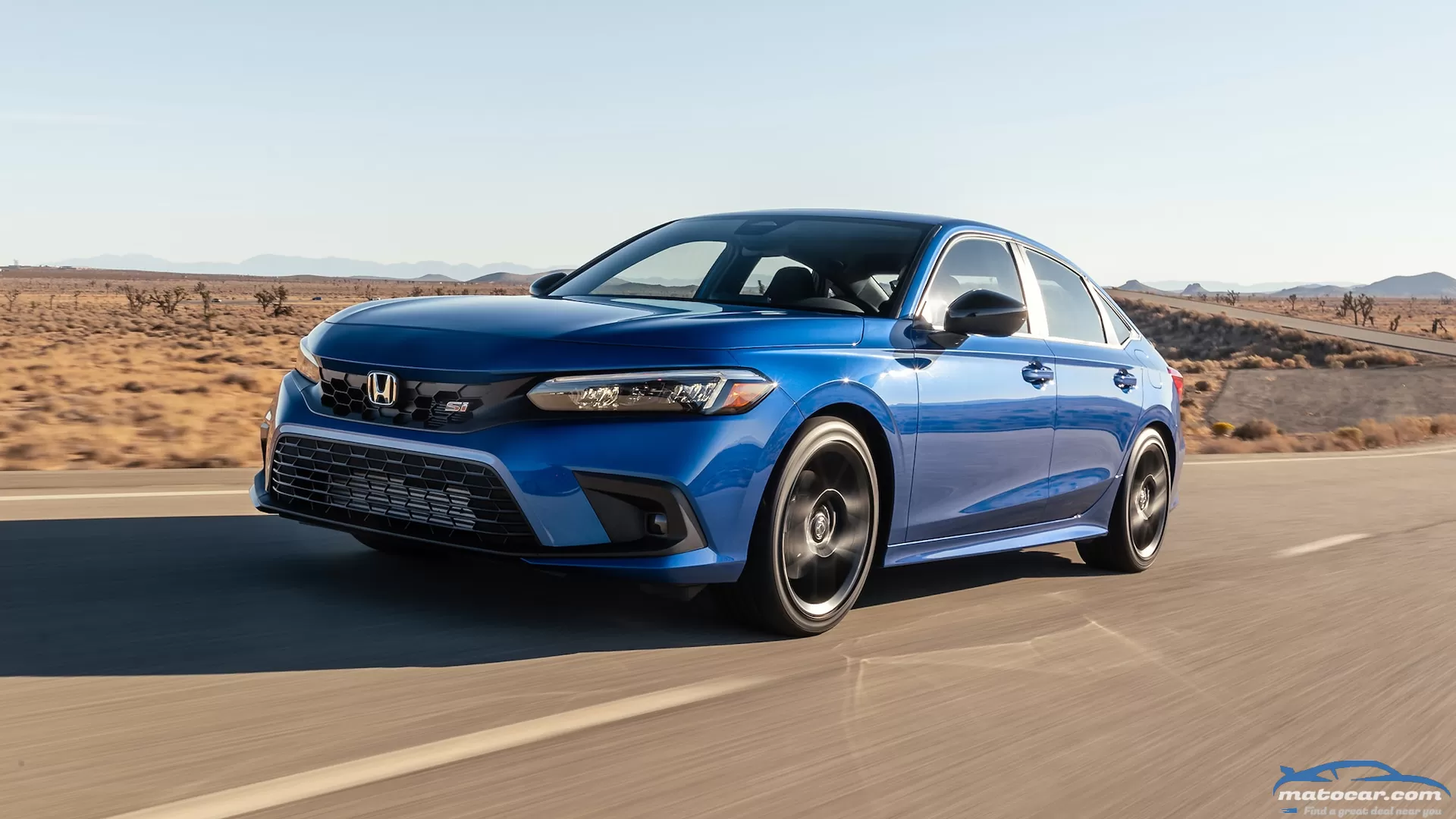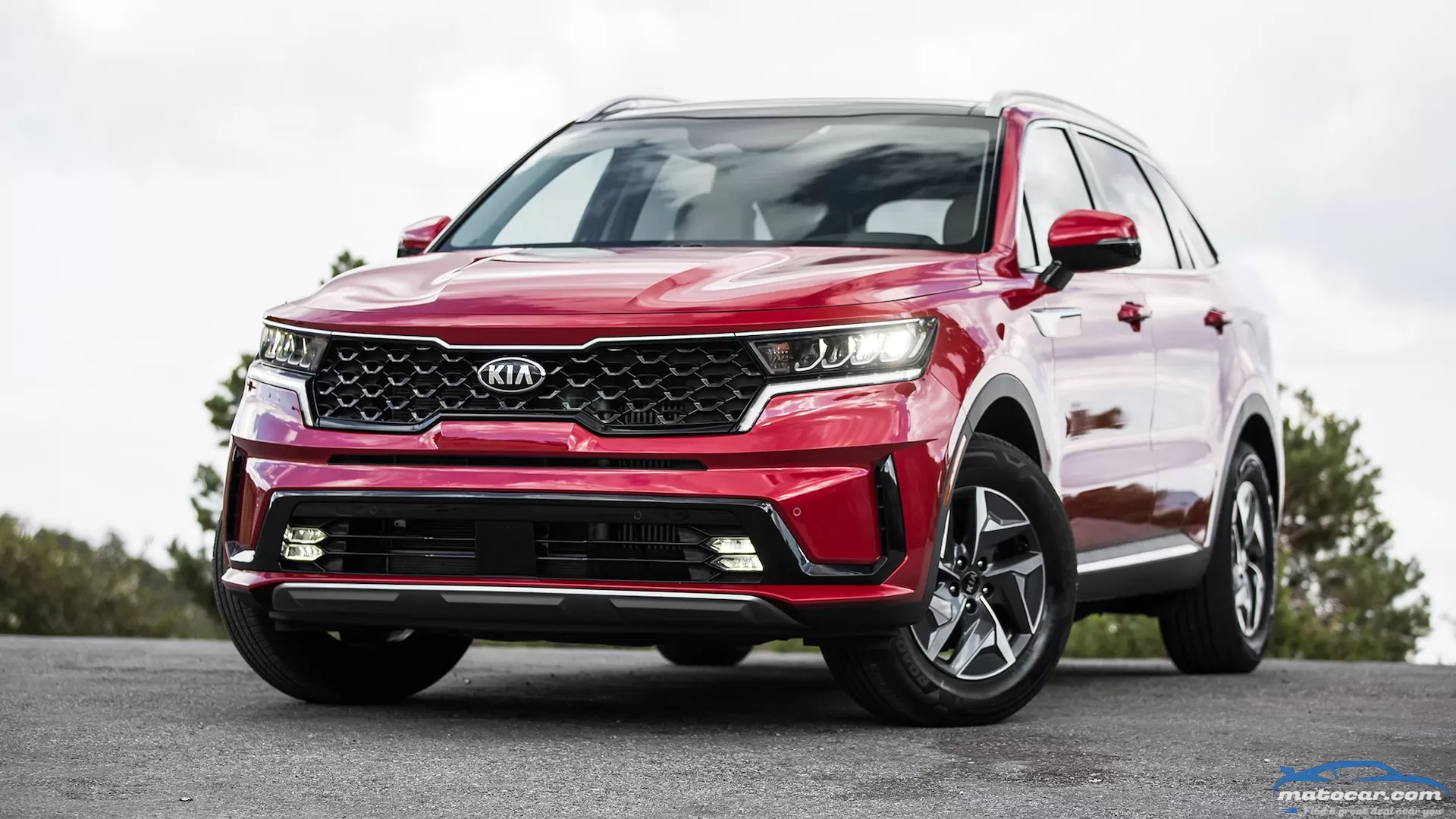Cargo Ship Full of New Porsches, Lambos, Bentleys, and VWs Sinks After Fire

Update March 1, 2022: MOL Ship Management Singapore, the company that operated the Felicity Ace ship under the Panamanian flag, has announced the car carrier has capsized and sunken below the surface following the onboard fire. Salvage crews had been battling the fires onboard for weeks in an attempt to salvage some of the ship and its contents. It's unclear if anything from the ship was collected before it sank.
The initial blaze is said to have started in the cargo hold, where thousands of cars, including some battery-electric vehicles, were being shipped to North America. Here is the latest statement from the Felicity Ace information resource website:
"Initial reports from the local salvage team state that the vessel had sunk at around 9AM local time having suffered a list to starboard. The last vessel position was around 220nm off the Azores. The salvage crafts will remain around the area to monitor the situation. "
Update February 18, 2022: Reports now indicate the ship is loaded with vehicles from Audi, Bentley, Lamborghini, Porsche, and VW, including some battery-electric powertrain vehicles that now pose a serious hazard for maritime fire crews attempting to salvage the burning vessel.
This story was originally published February 17, 2022, and has since been updated to reflect new information and developments in the ship's fate and the fate of the cargo onboard.
You may also like
ProsSix-speed manual is pure joyLight, tactile handlingIncredible value proposition ConsBrakes need more staying powerHigh and vague clutch engagement pointRevs can hangFor the as-tested price of the Lamborghini Huracán STO, you could buy 15-and-a-half Si-badged Honda Civics, the lowest-priced, least powerful, and third-lightest contender vying for our PVOTY calipers. Did a humble, sub-$30K, front-wheel-drive economy sedan making only 200 horsepower have a chance against all the Black Series/Wings, M's, V's, GTs and GT3s?Abso-friggin-lutely. In fact, many of the supposed shortcomings of the 2022 Honda Civic Si made it stand out in our field of monstrously powered beasts. Subtracting brute force and head-snapping thrust—and much of the associated sound and fury—sharpened our judges' perception of other attributes. "There's something really tactile and raw about the Civic Si that gets me going," director of editorial operations Mike Floyd said. "Its four-cylinder at full chat just sounds so lean and mean."The Civic Si makes a strong value and fuel economy statement, and the Si's mini-Accord styling adds maturity missing from the previous-generation Civic. Engineering excellence is everywhere you look and touch; every judge called out the light, communicative steering and the "delightful" feel and "super-precise" throws of the Si's six-speed manual transmission, as they extracted all 192 lb-ft from the 1.5-liter turbo inline-four."More low-end torque and a longer horsepower peak are exactly what this engine needed," features editor Scott Evans said. "The torque makes it nicer to drive at every speed, and the power no longer falls off at the top end."To be clear, at nearly 15 pounds per horsepower (more than double the load of some other competitors), the Si is slow, but "Who cares?" was the prevailing sentiment. "It's just so stable and confident in a corner," Evans said. "You just want to drive it faster and faster because it's so rewarding. It's still a momentum car, and that's great because it really makes you work on your driving to get the most out of it."Amid the pages of notes on all our competitors, the adjectives "authentic," "approachable," and "attainable" were reserved for the Si. It was the performance vehicle everyone could quietly appreciate. "There is something appealing about seeing myself in an Si that makes me like it even more in this competition, which is loaded with vehicles I could never hope to actually own in my lifetime," deputy editor Alex Stoklosa said.So why wasn't it even a finalist? For one thing, the only other front-driver in the mix, the Hyundai Veloster N, delivered an even more intriguing and irresistible combination of turbo-boosted fun. And there were some blemishes on the Civic Si's otherwise smooth 'n' sporty driving experience. Squishy at first dab, the Si's brakes faded for some judges by the end of the handling course. Although that's a non-factor on the street, it did not bode well for the at-the-limit track sessions the finalists would encounter. Judges also called out the clutch's light pedal and its high and vague engagement point. The engine's tendency to hang onto revs also drew criticism.For some, the Si just wasn't a big enough step up from the already sublime 11th-generation Civic. Other judges were tantalized but left thirsty for the sharper edge and much-needed power boost promised by the coming Civic Type R. So we shall wait for next year. 2022 Honda Civic Si Specifications Base Price/As tested $28,315/$28,515 Power (SAE net) 200 hp @ 6,000 rpm Torque (SAE net) 192 lb-ft @ 1,800 rpm Accel, 0-60 mph 7.1 sec Quarter-mile 15.3 sec @ 92.8 mph Braking, 60-0 mph 110 ft Lateral Acceleration 0.93 g (avg) MT Figure Eight 26.3 sec @ 0.67 g (avg) EPA City/Hwy/Comb 27/37/31 mpg Vehicle Layout Front-engine, FWD, 5-pass, 4-door sedan Engine, Transmission 1.5L Turbo direct-injected DOHC 16-valve I-4, 6-speed manual Curb Weight (F/R DIST) 2,981 lb (59/41%) Wheelbase 107.7 in Length x Width x Height 184.0 x 70.9 x 55.7 in On Sale Now Show All
chevrolet corvette Full OverviewWith its engine moved behind the passenger compartment instead of in front, the 2021 Chevrolet Corvette gains extra storage space where the engine used to be. We find the front trunk, or "frunk" as it's often called, is very useful—at least it was until it stopped opening.There were no warning signs. Out of the blue, the electronic release mechanism just stopped releasing. Whether you pushed the button on the key fob, inside the cabin, or under the headlight, the turn signals would blink in acknowledgment but the hood wouldn't budge. Thankfully, none of our stuff was locked inside.We should note, this isn't the first issue Chevrolet has had with the C8 Corvette's front trunk lid, nor is it a repeat of those past issues. First, the company had an issue with front trunk lids not latching correctly and coming open while driving. Later, it was found the emergency release button inside the front trunk (in case a small person gets trapped inside) might stop working 10 minutes after the car was turned off. Both were corrected by a software recall issued months before our car was built. Ours just plain didn't want to open no matter what button you pushed or whether you were moving or parked.Luckily for us, it happened right around the time the car started asking for its first service appointment. With 8,817 miles on the Corvette's clock, we dropped it off at the local dealer, where we were informed it also had two outstanding recalls in need of correction. The first was a software update to correct an issue with the infotainment screen failing to come on in cold temperatures, an issue we'd only noticed once or twice because Los Angeles never gets that cold. Easy fix, covered under warranty.Neither the front trunk lid nor the other recall, for the fluid reservoir cap on the front lift system, could be fixed that day, unfortunately. The cap was on backorder (apparently, it leaks sometimes, though we never had this issue), and the latch actuator in the front trunk needed to be replaced. That, too, had to be ordered.On the plus side, we did get the first oil change and general service out of the way. Eight quarts of synthetic oil, a new filter, and a billable hour of the tech's time set us back $183.04. The dealer called us back 12 days later when the parts arrived and fixed both the front trunk and the reservoir cap under warranty.Separate from the service, we wore through our first set of tires with 11,589 miles on the clock. With staggered wheel sizes front and rear, the tires aren't all the same price, with the fronts going for $406.99 each and the rears $537.99 apiece. Altogether, a fresh set us back $1,889.96, plus $100 for mounting and balancing by ZipTire.Less than 12,000 miles is a very short life for a modern tire, but there are extenuating circumstances. Some of those miles were on a racetrack, which wore them down more quickly. Before it hit the track, we also put the car in its optional track alignment, which specifies a lot of negative camber, among other things. Greatly preferring how the car drives in track alignment, we elected to leave it that way knowing it would wear the tires out faster.Sure enough, we noticed cords showing on the inner shoulders of the rear tires at 11,589 miles even though there was plenty of tread left on the rest of the tires. Let that be a lesson to you: Check the entire tire for wear, not just the tread in the middle.Wear on the inside shoulders is the price of running negative camber, which tilts the tops of the wheels inward rather than positioning them straight up and down. It's great for grip in turns but bad for tire life. Fun fact: A Formula 1 car is limited to 3.25 degrees of negative camber on the front wheels. The C8's track alignment calls for 3.00 to 3.01 degrees of negative camber in the front. You can see the lean on these wheels. Read More About Our Long-Term 2021 Chevrolet Corvette Z51: The Corvette's ArrivalUpdate 1: The C8 Corvette's Launch Control Is InconsistentUpdate 2: How the Corvette Z51 Was Faster (Once) Around One Track Than a Porsche Cayman GT4Looks good! More details?
kia sorento-hybrid Full OverviewThe Kia Sorento is one of the better midsize SUVs you can buy, but it just missed a podium placement in our midsize SUV rankings. So what gives? Well, despite its confident handling, eager responses, and tech-forward interior, the mainstream turbocharged gas powertrain isn't as refined as it should be. We recently tested the Sorento Hybrid, and it has an entirely different personality. Is this the pick of the litter?While the non-hybrid Sorento offers a broad range of models, Kia streamlined the hybrid lineup into two moderately contented trims. Our test example was the higher EX version, which is far from Spartan but not as plush as the tippy-top conventional Sorentos, and it's worth noting the hybrid only offers a six-seat configuration where the regular version also has an available seven-seat layout. Fuel economy is the main draw here, with hybrids achieving 39/35 mpg city/highway. In comparison, the gas-only 2022 Sorento tops out at 24/29 mpg with the base engine and 22/29 mpg with the turbo four-cylinder—all with front-wheel drive.To achieve these strong results, the 2022 Kia Sorento Hybrid teams a 1.6-liter turbocharged four-cylinder, electric motor, and lithium-ion battery pack to deliver a healthy 227 horsepower and 258 lb-ft of torque to the front wheels. (AWD adds $1,800-$2,300, depending on trim level.) The hybrid trades the regular Sorento's clunky eight-speed dual-clutch transmission for an unobtrusive six-speed planetary automatic.The Objective Numbers—and Subjective OpinionIn our tests, the Sorento Hybrid ran from 0-60 mph in 8.4 seconds. That matches exactly the time we achieved in a Toyota Highlander Hybrid AWD, which is larger than the tweener Kia. Unsurprisingly, the Sorento Hybrid is quite a bit slower than the 281-hp turbocharged Sorento, which hit the mark in 6.3 seconds. More troubling than the mediocre acceleration time is exactly how the Sorento accelerates and its lack of power, especially at speeds above 50 mph. There's a bit of a sugaring feel from the hybrid's turbocharged engine, too, which is a disappointment.Our feelings were mixed on the Sorento Hybrid's ride, with some noting it could use refinement. Handling is a tough call, too. On our figure-eight course, the Kia turned in a time of 27.7 seconds at an average 0.62 g, a better performance than we achieved in the Highlander Hybrid (28.4 seconds at 0.58 g). The non-hybrid Sorento beats them both with a time of 26.5 seconds at 0.67 g. Our test team praised the Sorento Hybrid's natural steering feel and neutral chassis, but its performance wasn't consistent. "Acceleration was brisk while I had an almost full battery but clearly waned when I got down to one last bar," road test editor Chris Walton said. We also noted considerable body lean.Because hybrids often suffer from mushy or non-linear brakes, we were curious to see how the SUV would perform in our 60-0-mph test. The Sorento Hybrid stopped in 121 feet, on par with the Highlander Hybrid but a slightly longer distance than the non-hybrid Sorento. Nevertheless, our test team praised the Sorento Hybrid's brake feel and overall body control.As a whole, the Sorento Hybrid's driving experience failed to impress. The turbo gas-only Sorento is the more tempting option, even if its engine and transmission combination rarely serve up a smooth off-the-line start.How It Is to Live WithAt least the hybrid doesn't sacrifice much interior space for better fuel economy. It offers slightly less legroom in the second row than the non-hybrid model, but it has the same amount of legroom in other rows and the same amount of cargo space. Headroom is tight in the third row, although legroom there is reasonable enough—if still tight—for a three-row SUV of this size. The raised floor causes your knees to sit up higher than you might imagine. Bottom line: The back row is best for occasional use.Accessing the way back is easy because the rear seats fold down readily. The second-row seats go down with the push of a button on the top of the seat back, and the third-row seats drop to the floor with the simple pull of a lever. There's also the option to fold down the second-row seats with a button in the cargo area.The interior departs from Kia's usual designs. Along with vertical-oriented air vents, the cabin features a space-saving rotary gear shifter. For the 2022 model year, all Sorento Hybrids feature a sleek 10.3-inch touchscreen. (Our 2021 model photo vehicle was stuck with an 8.0-inch screen).Our Sorento Hybrid EX came with a slew of standard safety features, including rear blind-spot collision avoidance assist, rear cross-traffic collision avoidance assist, stop-and-go adaptive cruise control, and a helpful lane keep assist feature. Heated front seats, an expansive panoramic sunroof, and USB chargers for all three rows sweeten the deal. Kia is known for its strong feature-per-dollar value, and although this isn't a shining example, our Sorento Hybrid test vehicle offers a solid amount of equipment for just under $38,000. Looking at value in terms of five-year cost of ownership, the Sorento Hybrid is just adequate. Considering costs such as depreciation, insurance, fuel, and maintenance over a five-year period, our partners at IntelliChoice gave the 2022 Sorento Hybrid an Average value rating.Kia has a unique product on its hands: a stylish, three-row SUV that's not too big and that provides excellent hybrid fuel economy. But be prepared to sacrifice performance for efficiency. The Sorento Hybrid lacks the wow factor of Kia's other three-row SUV, the Telluride. At the end of the day, the Sorento Hybrid is a solid vehicle, and it would have been hugely impressive just a few years ago, but we now know how much better Kia can do.Looks good! More details?2022 Kia Sorento EX Hybrid Specifications BASE PRICE $37,165 PRICE AS TESTED $37,610 VEHICLE LAYOUT Front-engine/motor, FWD, 6-pass, 4-door SUV ENGINE 1.6L Turbo direct-injected DOHC 16-valve I-4 POWER (SAE NET) 177 hp @ 5,500 rpm (gas), 60 hp (elec); 227 hp (comb) TORQUE (SAE NET) 195 lb-ft @ 1,500 rpm (gas), 195 lb-ft (elec); 258 lb-ft (comb) TRANSMISSION 6-speed automatic CURB WEIGHT (F/R DIST) 4,091 lb (56/44%) WHEELBASE 110.8 in LENGTH x WIDTH x HEIGHT 189.4 x 74.8 x 66.7 in 0-60 MPH 8.4 sec QUARTER MILE 16.4 sec @ 87.2 mph BRAKING, 60-0 MPH 121 ft LATERAL ACCELERATION 0.80 g (avg) MT FIGURE EIGHT 27.7 sec @ 0.62 g (avg) EPA CITY/HWY/COMB FUEL ECON 39/35/37 mpg EPA RANGE (COMB) 665 miles ON SALE Now Show All




0 Comments